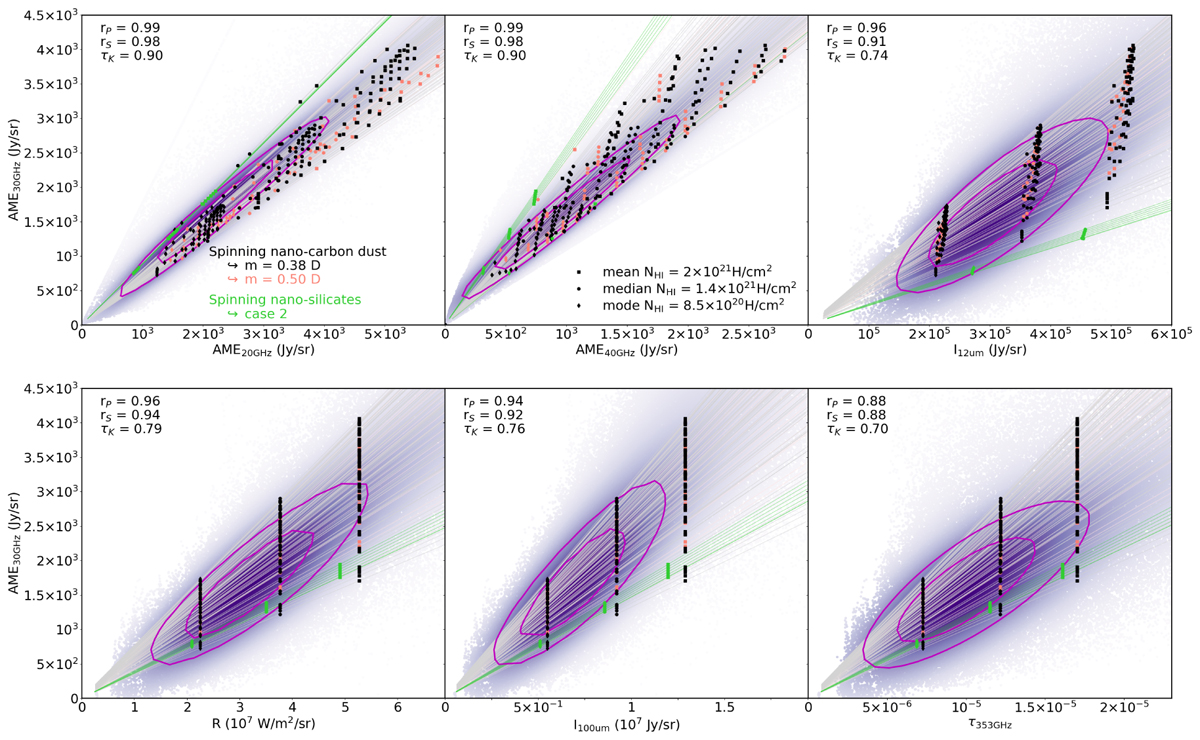Fig. 5

Download original image
Comparison of observed and modelled correlations. Top from left to right: observations are plotted as density of points maps of AME30 GHz vs. AME20 GHz, vs. AME40 GHz, and vs. dust emission in the 12 μm IRAS filter. Bottom from left to right: observations are plotted as density of points maps of AME30 GHz vs. radiance, vs. dust emission in the 100 μm IRAS filter, and vs. optical depth at 353 GHz. For all panels, we overplot the contours enclosing 50% of the pixels (internal contour) and 75% of the pixels (external contour). The models fitting the observations are shown with black and pink symbols for spinning nano-carbon dust, m = 0.38 and 0.5 D, respectively, and green symbols for spinning nano-silicate dust (case 2; see Sect. 5 for details). Squares, circles, and diamonds show models scaled to the mean (NHI = 2 × 1021 H cm–2), the median (NHI = 1.4 × 1021 H cm–2), and the mode HI column density (NHI = 8.5 × 1020 H cm–2), respectively. The light grey, pink, and green lines show the same models for HI column densities extending over the entire observational range 1020 ⩽ NHI ⩽ 1.4 × 1022 H cm–2. The various model points show spinning-dust models for different fCNM values (see Sect. 5.2 for details). The rP, rS, and τK give the Pearson correlation coefficient, the Spearman rank-order correlation coefficient, and the Kendall’s tau, respectively.
Current usage metrics show cumulative count of Article Views (full-text article views including HTML views, PDF and ePub downloads, according to the available data) and Abstracts Views on Vision4Press platform.
Data correspond to usage on the plateform after 2015. The current usage metrics is available 48-96 hours after online publication and is updated daily on week days.
Initial download of the metrics may take a while.


